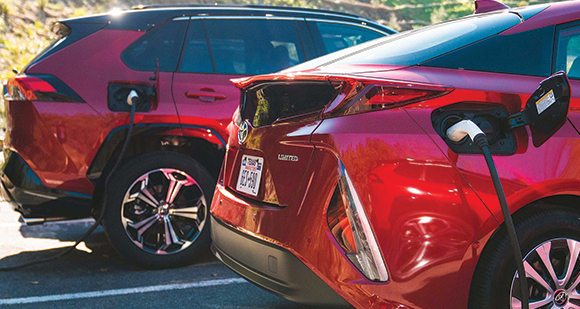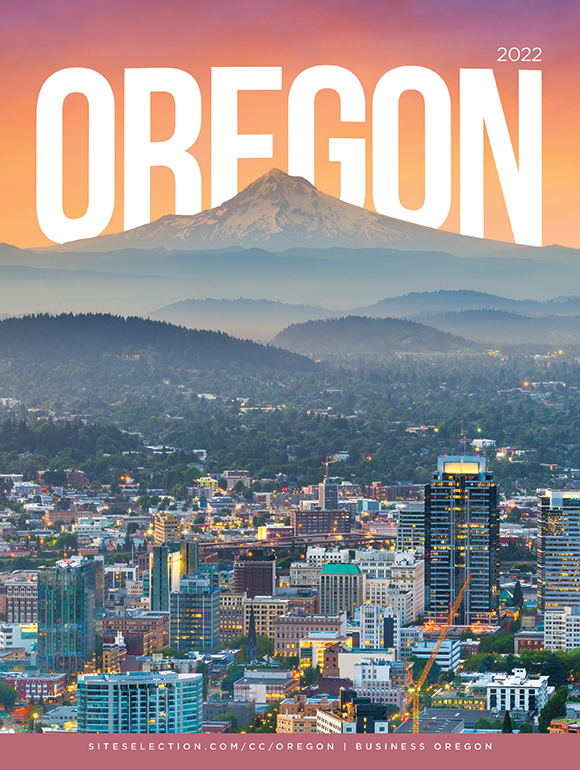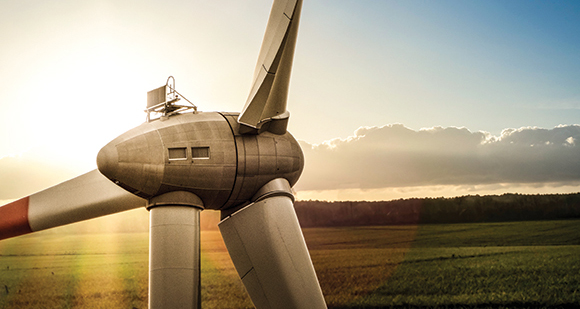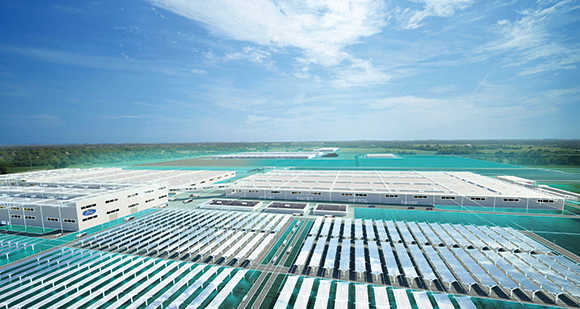|
  
|
FROM SITE
SELECTION MAGAZINE, JANUARY 2022 ISSUE
|
 |
MID-SIZED MARKETS
A megasite and specially prepared incentives set the table for a
1,750-job EV battery manufacturing plant from Toyota.
|
|
 |
ALABAMA
Led by notable Alabamians such as former U.S. Secretary of State Dr.
Condoleezza Rice, the commission in December issued recommendations
in five areas.
|
|
|
2022 OREGON
ECONOMIC DEVELOPMENT GUIDE
|
|
The Digital Edition of the 2022 Oregon Economic Development Guide produced by
Conway Custom Content for Business Oregon is now available. Read our
interviews with Governor Kate Brown, Business Oregon Director
Sophorn Cheang and PGD President and CEO Maria Pope, among others.
Learn how the state’s infrastructure from ports to broadband is
sustaining the economy. Discover how higher education institutions
and other workforce programs are partnering with industry. And see
what’s happening in such sectors as bioscience, outdoor gear &
apparel, food & beverage, high-tech, business services and more.
Watch this space in the coming weeks for web editions of stories
from this insightful publication.
|

|
  |

|
DEPARTMENT OF COMMERCE Q&A
Kansas Lieutenant Governor and Commerce Secretary David Toland
describes how a new playbook, the Framework for Growth, has put the
state in position to excel.
|
|
 |
ENERGY & UTILITIES
The Sunflower State’s leadership role in wind energy — like the wind
across the prairie itself — shows no signs of abating.
|
|
Nepal
According to several news reports citing a release from the
Investment Board of Nepal, Dabur Nepal, a Nepal division of the
Indian fast moving consumer goods (FMCG) conglomerate, is making
this investment in Kathmandu in order to expand production of its
signature fruit juices and other products such as hair oil and
honey. Most of the company’s products in Nepal are produced for
export to India. The full expansion is expected to be complete in
two to four years.
Zimbabwe
Zimbabwe newspapers report that Bulawayo-based Barmore Investments,
trading as Oceans Foods, is making this investment in a new maize
and small grains industrial million plant. “The new project adds
impetus into Bulawayo’s industrial transformation momentum,” reports
The Chronicle, “which has seen the city gradually reclaim its
manufacturing hub status, taking advantage of the supportive
Government economic reforms.”
|
|
  |

|
AUTOMOTIVE
Why Ford chose Tennessee for its biggest single EV investment.
|
|
 |
AGENCIES
A full directory to the workforce resources you need in every U.S.
state.
|
|
|
SITE
SELECTION RECOMMENDS
|
|
|
|
“U.S. mines produced approximately $90.4 billion in mineral
commodities in 2021—a $9.7 billion increase over the 2020 revised
total of $80.7 billion,” the U.S. Geological Survey reported recently in
its 27th annual Mineral Commodity Summaries report from the
USGS National Minerals Information Center. The report is a
comprehensive source of 2021 mineral data for the world.
“Decision-makers and leaders in both the private and public sectors
rely on the crucial, unbiased statistics and data provided in the
Mineral Commodity Summaries to make business decisions and determine
national policy,” said USGS National Minerals Information Center
Director Steven M. Fortier. “Industries that use nonfuel mineral
materials — such as steel, aerospace and electronics — created an
estimated $3.32 trillion in value-added products in 2021,” an 8%
increase from 2020, he said. Crushed stone was the leading nonfuel
mineral commodity domestically produced in 2021, accounting for 21%
of the total value of U.S. mine production. There were 14 mineral
commodities produced in the U.S. valued at more than $1 billion
each: crushed stone, copper, cement, gold, construction sand and
gravel, iron ore, salt, lime, industrial sand and gravel, zinc, soda
ash, phosphate rock, palladium and molybdenum. In 2021, the top 10
producing states were, in descending order of rank, Arizona, Nevada,
Texas, California, Minnesota, Alaska, Utah, Florida, Missouri and
Michigan.
|
|

|
USGS photo by L. DeSmither
|
|
This telephoto image of the west vent in Halema‘uma‘u crater at the
summit of Kīlauea in Hawai‘i Volcanoes National Park was taken
November 3, 2021, as ponded lava within the spatter cone supplied
lava into the lava lake through the tubed-over spillway. “The
fast-moving lava stream is incandescent as it enters into the lava
lake at the base of the cone,” explained the U.S. Geological Survey.
“As the lava slows and cools, a thin crust begins to form on the
surface (center right).”
|
|
|
|

